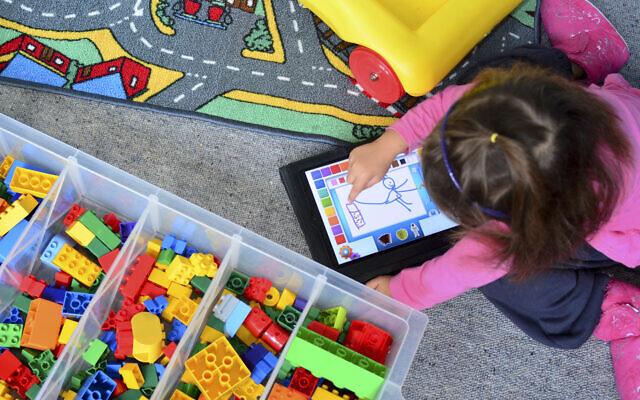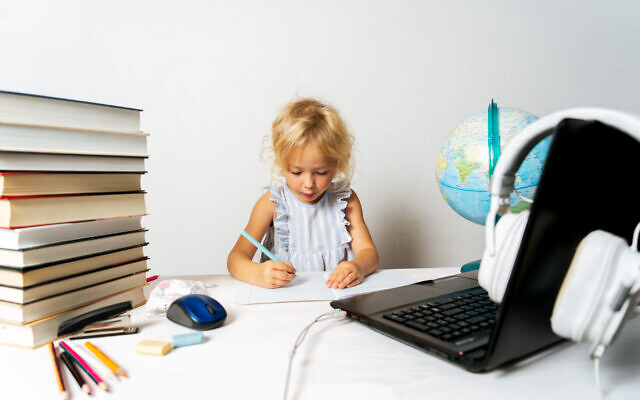Embracing the digital revolution
While COVID lockdowns paved the way for online learning, years before the virus hit our shores, schools were already rapidly adapting to the modern world of constant connectivity.
Ask many parents and they’ll tell you that school has changed a lot since they skipped through the hallways. Gone are the days of chalkboards and whiteboard markers. Technology has changed the way children are learning and developing. Our little ones are playing ABCs, mathematics and science games on devices, often without even realising they’re learning at all.
Education and technology
We cannot ignore that children, sometimes even toddlers, are exposed to screens. They FaceTime family members who they can’t physically see and as they grow older, they begin playing games on devices. But as Code Camp co-founder Ben Levi explains, there is a difference between merely being a consumer and participating as a creator. “Not all screen time is created equal,” Levi says. There is a difference between aimlessly watching YouTube videos and creating something on a device, playing an education game such as Reading Eggs or using a SmartScreen to follow along with some yoga poses.
Learn at their own pace
Of course, there’s a fine balance when it comes to technology, but using it in the right way can help many children learn.
It is important to remember that children don’t all learn at the same pace.
Some enjoy maths a lot more, so pick up theories much faster. Others appreciate the English language and take on creative writing more willingly. Every child is different, which is where technology can help.
For example, ABC Reading Eggs, available on Apple and Android devices, is an extension of a child’s time in the classroom. The added benefit is that when it comes to apps, children can go at their own pace. “One of the key successes of a program like ABC Reading Eggs is the agency it gives kids to learn at the rate that they want to learn,” says Sara Leman, Literary Specialist for ABC Reading Eggs. “A learner can come in, take a placement test and start at just the right place, and continue at their own pace. If a child forgets a skill, they can easily repeat a lesson. And they can do it anywhere and at any time.”

Embracing the right kind of technology
When it comes to technology and its use in education, it’s also about how the technology is benefiting the student. When coding, for example, there are a myriad of other skills children are learning. “It’s about problem solving and logical thinking,” Levi explains. “It’s about creativity and digital storytelling. It’s coming up with an idea or a storyline and then working out the logic and the design of how to actually bring that to life.” Levi also says that parents notice a difference when it comes to their child’s confidence and pride in having built something from scratch – all thanks to technology.
And when it comes to television screen time, there are certain shows that stack up better than others when it comes to ‘learning’. One example is critically acclaimed Australian newcomer Bluey, available on ABC Kids and ABC iView. Each episode has a teachable moment – whether that’s conflict resolution, the importance of following rules, the power of perseverance and even death, which is dealt with in an age-appropriate way, in Copycat.
Striking a balance
Of course, as Marjery Evans, CEO of Independent Schools Australia says, while technology can do wonderful things, it cannot replace physical connection. “There is no denying the remarkable rise in the significance of technology in education over recent years, with the COVID pandemic seeing that technology rapidly adapted and deployed on an unprecedented scale,” Evans notes.
“But while technology brings many wonderful benefits as an enabler, amplifier and accelerator of learning, we would do well to remember that a major key to student success lies in connections with teachers and classmates.”
This sentiment is echoed by the Department of Education, Skills and Employment. “Responding to the challenges of the 21st century requires young people to be creative, innovative, enterprising and adaptable, with the motivation, confidence and skills to use critical and creative thinking purposefully,” says a spokesperson for the Department. “The decision about how and when technology is used in the classroom is ultimately one for classroom teachers, and new technologies are just one of a suite of tools a teacher may use in the classroom to deliver a learning program to their students.”
Acknowledging change
Children are resilient, having spent the past 18 months adapting to an ever-evolving world – embracing online learning, accepting COVID protocols, handling lockdowns and isolations like little champs. This generation of children and adolescents are growing up in a very unusual time. But the situation has proven time and time again how beneficial technology can be as an extension of the learning environment, and how necessary digital skills are. “Being literate in the 21st century isn’t just about being able to read printed text anymore. It’s about having the skills to communicate effectively in an online, digital environment,” says Leman.
While technology can never replace the commitment, care and connection of teachers and carers, it can go a long way to help children learn and develop skills such as maths and reading, as well as soft skills such as time management and problem solving – as long as it’s used in the right way.


comments